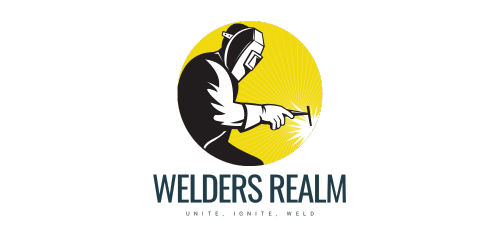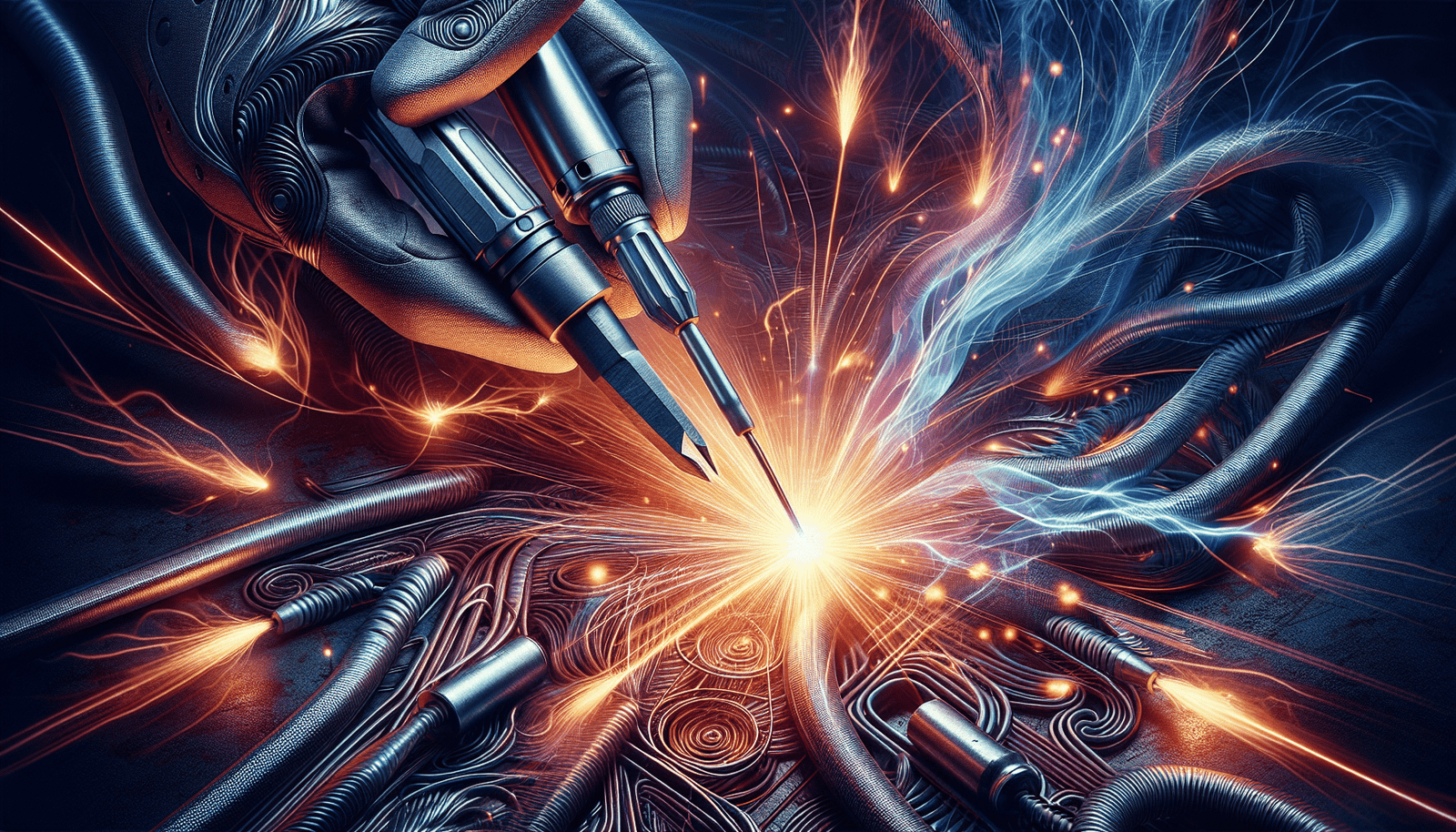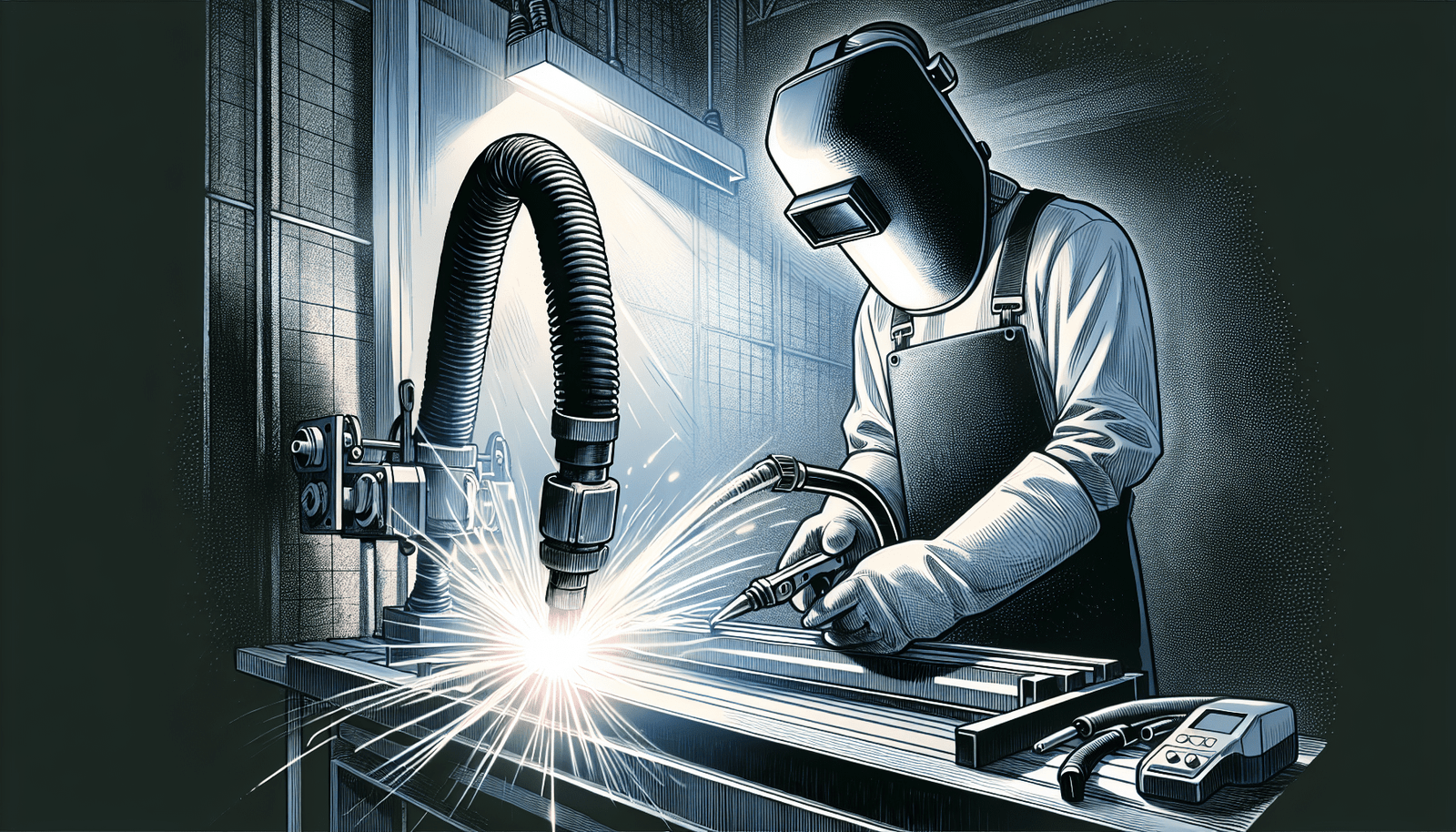If you’ve ever wondered about the behind-the-scenes work that goes into ensuring the safety and reliability of railroad tracks, then look no further. In this article, we’ll be shining a spotlight on the often overlooked but essential role of railroad welding. From answering your burning questions about welding practices to providing helpful product reviews, we aim to provide a friendly and approachable guide for both welding gurus and those seeking to learn more about this crucial aspect of railway maintenance. So, let’s dive right in and explore the world of railroad welding together!
Understanding Railroad Welding
Railroad welding plays a crucial role in the construction and maintenance of railway tracks, ensuring safe and reliable transportation. This article will explore the definition, fundamental principles, tools and equipment used in railroad welding, as well as its history, types of welds used, and its role in track formation, maintenance, and repair. We will also discuss safety concerns, quality control measures, the training and skills required for railroad welding, and the future of welding in track construction and maintenance. Let’s dive into the fascinating world of railroad welding!
Definition of Railroad Welding
Railroad welding refers to the process of joining two or more pieces of steel rail together to form a continuous track. It involves the use of heat and pressure to fuse the rails, creating a strong and seamless connection. By welding the rails together, the track becomes more durable and capable of withstanding heavy loads and the constant stress imposed by passing trains.
Fundamental Principles Involved in Railroad Welding
Railroad welding follows the same principles as other types of welding, such as ensuring proper penetration, maintaining the correct temperature, and using the appropriate filler material. The two main methods of railroad welding are thermite welding and flash-butt welding.
Thermite welding, also known as aluminothermic welding, involves using a chemical reaction to generate the intense heat required for welding. A thermite mixture, consisting of finely powdered aluminum and iron oxide, is ignited, producing molten steel that fuses the rail ends together.
Flash-butt welding, on the other hand, utilizes electric resistance to generate heat. The rail ends are clamped in a machine that applies pressure and passes a high electrical current through the rail ends, causing them to heat up and fuse together.
Tools and Equipment Used in Railroad Welding
Railroad welding requires specialized tools and equipment to ensure accurate and efficient welds. Some of the commonly used tools include:
- Welding Machine: This is the main equipment used in railroad welding, whether it’s the thermite welding apparatus or the flash-butt welding machine.
- Welding Consumables: These include the filler material in the form of thermite mixtures or welding rods used in arc welding.
- Rail Drills: These are used to create holes in the rails for the insertion of thermite charges or other purposes.
- Rail Grinders: These tools are used to prepare the rail surfaces before welding, ensuring a clean and smooth joint.
- Rail Saws: They are used for cutting and shaping the rails during repair and maintenance work.
It is crucial to have well-maintained and calibrated equipment to ensure the quality of welds and the safety of workers.
History and Evolution of Railroad Welding
Early forms of railroad construction and maintenance
Before the advent of welding, railway tracks were primarily constructed using mechanical joining methods such as fishplates or bolts. These methods had limitations, including reduced strength and durability, and required frequent maintenance due to loosening of the joints.
Introduction and adoption of welding in the railroad industry
The use of welding in the railroad industry began in the early 20th century. It was initially met with skepticism due to concerns about the integrity and reliability of welded joints. However, advancements in welding techniques and the development of specialized equipment led to increased acceptance and adoption of welding in railroad construction.
Recent advancements and technologies in railroad welding
In recent years, advancements in technology have further improved the efficiency and quality of railroad welding. Automated welding systems, advanced monitoring tools, and non-destructive testing techniques have made it possible to achieve more precise and consistent welds. These advancements have resulted in stronger and more reliable tracks, reducing maintenance costs and improving safety.
Types of Welds Used in Railroad Construction
Aluminothermic Welding
Aluminothermic welding, also known as thermit welding, is one of the most common methods used in railroad construction. It involves using a chemical reaction to produce the heat necessary for welding. The thermite mixture, consisting of aluminum powder and iron oxide, is ignited to create a molten steel reaction that fuses the rail ends.
Flash-Butt Welding
Flash-butt welding is another widely used method in railroad construction. It uses electric resistance to generate heat and fuse the rail ends together. The rail ends are clamped in a machine, and a high current is passed through them, causing them to heat up and form a weld.
Arc Welding
Arc welding, although less commonly used in railroad construction, is occasionally employed for specific applications. It involves creating an electric arc between the welding rod and the rail, melting both materials and creating a weld bead.
Differences and usage purpose of various types of welds
Each welding method has its advantages and usage purposes. Aluminothermic welding offers high strength, durability, and the ability to produce long continuous welds. Flash-butt welding provides excellent control over the welding process, producing consistent and reliable welds. Arc welding is suitable for smaller repairs and modifications.
Factors such as track conditions, location, and available equipment determine the choice of welding method in railroad construction.
Role of Welding in Railroad Track Formation
Welding in the formation of tracks
Railroad welding plays a crucial role in the formation of tracks. It allows for the extension and connection of rail sections to create a continuous track. Welding eliminates the need for mechanical joints, which can weaken the track and require frequent maintenance.
Ensuring alignment and smoothness of the rails
Welding helps ensure the alignment and smoothness of rails. By seamlessly joining rail sections, it minimizes height differences and misalignments, providing a smoother ride for trains. Well-executed welds contribute to overall track stability, reducing wear and tear, and preventing derailments.
Joining of different parts
Welding is essential for joining different parts of the track system, such as turnouts, crossings, and switches. It allows for the seamless integration of these components, maintaining track integrity and ensuring safe and reliable operations.
Maintenance and Repair of Railroad Tracks Through Welding
Common damages and vulnerabilities in railroad tracks
Railroad tracks are subjected to constant stress and wear due to the weight and speed of passing trains. This can result in various damages and vulnerabilities, including cracked rails, worn joints, and broken welds. Other factors such as environmental conditions, temperature fluctuations, and heavy loads can also contribute to track deterioration.
Role of welding in repairing these damages
Welding plays a crucial role in the repair and maintenance of damaged railroad tracks. In the case of cracked rails or broken welds, welding can be used to restore the integrity and strength of the track. By effectively repairing these damages, welding ensures the safe and uninterrupted operation of the rail system.
Preventative maintenance through welding
Welding also facilitates preventative maintenance by addressing minor faults and vulnerabilities before they escalate into major issues. Regular inspections and timely repairs using welding techniques help prevent track failures, reducing downtime and ensuring the safety of railroad operations.
Safety Concerns Associated with Railroad Welding
Potential risks and hazards in railroad welding work
Railroad welding work comes with potential risks and hazards that require proper safety measures. Some of the risks include exposure to fumes and gases, high heat, electrical hazards, and the potential for accidents or injuries due to heavy machinery and equipment.
Safety gear and practices employed in railroad welding
To mitigate these risks, railroad welders must use appropriate personal protective equipment (PPE) such as welding helmets, gloves, safety glasses, and fire-resistant clothing. Adequate ventilation systems and respiratory protection should also be employed to minimize exposure to fumes and gases. Additionally, proper training and adherence to safety protocols are essential for maintaining a safe working environment.
Regulations and guidelines for safety
Regulatory bodies and industry organizations have established guidelines and standards to ensure the safety of workers in railroad welding. These regulations cover aspects such as equipment maintenance, training requirements, safety protocols, and hazard management. Adhering to these regulations is essential for promoting a safe working environment and preventing accidents and injuries.
Railroad Welding Quality Control
Quality parameters in railroad welding
Quality control is of utmost importance in railroad welding to ensure the reliability and safety of tracks. Several quality parameters are considered during the welding process, including proper penetration, absence of defects such as undercutting or porosity, and adherence to welding specifications and standards.
Assessment and testing techniques
Various testing techniques are employed to assess the quality of railroad welds. Visual inspection, ultrasonic testing, magnetic particle testing, and dye penetrant inspection are some commonly used methods. These techniques help identify any defects or flaws in the welds, allowing for corrective actions to be taken promptly.
Compliance with international and national standards
Railroad welding must comply with international and national standards to ensure the highest level of quality and safety. Standards such as the American Welding Society (AWS) standards and the International Organization for Standardization (ISO) guidelines provide specifications and procedures for welding processes, materials, and equipment. Compliance with these standards ensures consistent and reliable welds that meet industry requirements.
Training and Skills Required for Railroad Welding
Necessary qualifications for a railroad welder
Becoming a railroad welder requires specific qualifications and certifications. A high school diploma or equivalent is typically required, along with completion of a recognized welding certification program. In addition to technical skills, physical fitness, attention to detail, and the ability to work in challenging environments are crucial attributes for a railroad welder.
Training programs and certifications
Various training programs and certifications are available to aspiring railroad welders. These programs provide the necessary theoretical knowledge and hands-on training required for the role. Certifications such as the Certified Welder (CW) and the Certified Welding Inspector (CWI) further validate the welder’s expertise and competence.
Skills and competencies important for the role
Railroad welders need to possess several skills and competencies to perform their job effectively. Strong welding skills, knowledge of welding techniques and procedures, the ability to interpret engineering drawings, and an understanding of track construction and maintenance are essential. Attention to detail, problem-solving abilities, and the capability to work as part of a team are also important attributes for a successful railroad welder.
Future of Welding in Railroad Track Construction and Maintenance
Emerging advancements in welding methodologies
The future of welding in railroad track construction and maintenance looks promising with several emerging advancements. New welding methodologies are being developed, focusing on increased efficiency, reduced costs, and improved track performance. These advancements may include innovative joining techniques, advanced welding materials, and enhanced automation.
Role of automation and robotics in railroad welding
Automation and robotics are likely to play a significant role in the future of railroad welding. The use of robotic welding systems can increase productivity, precision, and consistency in weld quality. Automated track inspection systems equipped with sensors and cameras can detect defects and vulnerabilities in real-time, allowing for immediate repairs.
Implication on efficiency, safety, and cost
The implementation of advanced welding methodologies, automation, and robotics in railroad track construction and maintenance can have profound implications. It can lead to increased efficiency, reduced downtime for repairs, enhanced safety through real-time defect detection, and lower maintenance costs. These advancements aim to optimize the performance and longevity of railroad tracks, ensuring safe and reliable transportation.
Selecting Welding Products for Railroad Application
Considerations while selecting welding products for railroad use
When selecting welding products for railroad applications, certain factors need to be considered. These include the welding method being employed, the specific requirements of the track, the type of steel being welded, and the compatibility of the welding product with the equipment used.
Top brands and products in the market
Several reputable brands offer welding products specifically designed for railroad applications. Some of the top brands include Lincoln Electric, ESAB, and Miller Electric. These brands provide a range of welding machines, consumables, and accessories that meet the high standards and demands of railroad welding.
Customer reviews and feedback
Customer reviews and feedback can provide valuable insights when selecting welding products for railroad use. Reading reviews from other professionals in the industry can help determine the performance, reliability, and durability of the products. Additionally, seeking recommendations from experienced railroad welders and industry experts can assist in making informed decisions.
Railroad welding is a critical aspect of ensuring safe and reliable tracks for the efficient transportation of goods and passengers. By understanding the definition, fundamental principles, and different types of welding methods used in the railroad industry, as well as its role in track formation, maintenance, and repair, we can appreciate the significance of this specialized field. As technology continues to advance and new welding methodologies and automation are introduced, the future of railroad welding looks promising, with improved efficiency, safety, and cost-effectiveness. Whether it’s selecting the right welding products or ensuring compliance with quality control standards, the expertise and skills of trained railroad welders play a vital role in maintaining the integrity and longevity of our railway systems.




